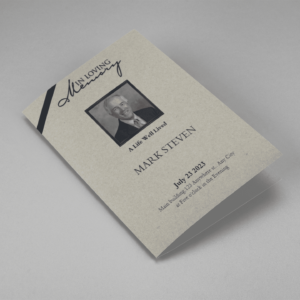Writing an obituary can be a daunting task, especially during a time of grief. However, it is an important way to honor and celebrate the life of a loved one. In this obituary writing guide, we will provide you with step-by-step instructions on how to craft a meaningful and memorable obituary.
Understanding the Importance of Obituaries
Obituaries serve as more than just announcements of someone’s passing. They are tributes to a person’s life, capturing their essence, accomplishments, and impact on the world. Through obituaries, we honor the deceased, provide closure for grieving families and friends, and preserve their memory for future generations.
Key Elements of an Obituary
- Basic Information: Start with essential details such as the full name, age, date of birth, and date of passing of the deceased.
- Biographical Sketch: Provide a brief overview of the person’s life, including their upbringing, education, career, hobbies, and passions.
- Achievements and Contributions: Highlight significant milestones, accomplishments, and contributions made by the deceased, both professionally and personally.
- Family and Relationships: Acknowledge surviving family members and close relationships, including spouses, children, grandchildren, and other loved ones.
- Funeral Arrangements: Include details about the funeral or memorial service, including date, time, location, and any special instructions for attendees or charitable donations in lieu of flowers.
- Closing Words: Conclude with a heartfelt message or sentiment, expressing gratitude, love, and remembrance for the departed.
Crafting An Obituary
Step 1: Gather Information
Before you begin writing, gather all the necessary information about the deceased, including their full name, age, date and place of birth, date and place of death, and any surviving family members. You should also gather information about their education, career, hobbies, and any significant achievements or contributions they made during their life.
Step 2: Choose a Tone and Style
Decide on the tone and style of the obituary. Consider the personality of the deceased and the preferences of their family. The tone can be formal, informal, or somewhere in between. The style can be traditional or more creative, depending on what feels most appropriate.
Step 3: Write the Obituary
- Begin by writing a brief introduction that includes the full name of the deceased, their age at the time of death, and the date and place of death. You can also include the cause of death if you wish.
- Next, write a brief biographical sketch of the deceased, highlighting their life accomplishments, interests, and personality traits. You can also include information about their family members, such as spouses, children, and siblings.
- Finally, conclude the obituary with information about any funeral or memorial services that will be held in honor of the deceased. You can also include information about where donations can be made in their memory.
Step 4: Edit and Revise
Once you have written the obituary, take the time to edit and revise it carefully. Check for spelling and grammar errors, and make sure that the information is accurate and complete. You may also want to have someone else read the obituary to provide feedback and suggestions for improvement.
Step 5: Publish and Share
Once you are satisfied with the obituary, you can publish it in local newspapers, on social media, or on the funeral home’s website. You can also share it with friends and family members to help spread the word about the passing of your loved one.
Tips for Writing an Obituary
- Be Authentic: Write from the heart, reflecting the unique personality, values, and experiences of the deceased.
- Focus on Positivity: While it’s essential to acknowledge the sadness of loss, emphasize the positive aspects of the person’s life and legacy.
- Include Personal Anecdotes: Share meaningful stories, memories, and anecdotes that capture the essence of the person and their impact on others.
- Use Clear and Concise Language: Keep sentences and paragraphs concise, using simple language that is easy to understand.
- Proofread Carefully: Take the time to review and edit your obituary for accuracy, grammar, and spelling errors before publication.
- Consider the Audience: Tailor the tone and content of the obituary to suit the preferences and cultural norms of the intended audience.
Template for Obituary
A template for an obituary provides a structured format, guiding you through the process and ensuring you don’t overlook any important details. It typically includes sections for the deceased’s basic information, a biographical sketch, family details, funeral arrangements, and a closing message. Using an obituary template can save you time and effort, allowing you to focus on honoring your loved one’s memory and crafting a tribute that truly reflects their life and legacy.























































